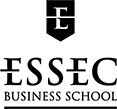Our thematic selections - Monday 09 May 2022
Diversity, equity, inclusion

The topic of diversity, equity and inclusion is a major issue for ESSEC, higher education and society. The following is a selection of resources developed by the ESSEC K-lab, in partnership with the Equality, Diversity and Inclusion Center for ESSEC. It does not claim to be exhaustive, and is based on a few examples that are not representative of the richness of the subject. It is a simple entry point for your specific research and reflections, which will go much further in terms of precision in accordance with your information needs.
1/ Background
Diversity, equité, inclusion : what are we talking about?
Definitions (from Diversity in the workforce, current issues and emerging trends, edited by Marilyn Y. Byrd and Chaunda L. Scott, Routledge, 2014):
The term "Diversity", which originated in biology, was then applied to the social field to designate the countless ways in which human beings differ from one another. It is a fairly recent concept in the workplace, where it refers to the valuing of different ways of leading, managing, being business partners, employees, consultants, consumers, etc. Some retain a restricted definition of diversity criteria based on national, EU and international regulations. Others extend it to broader criteria of possible discrimination.
Equity is the equal distribution of opportunities.
Inclusion is the maintenance of an environment that welcomes, respects, encourages and values the participation of all individuals or groups of individuals with their differences
For more theoretical developments, you can refer to the documentation presented below, but also to the courses of the Leadership and Diversity Chair and the Mooc Diversity and inclusion in the workplace by Junko Takagi on Coursera.
2/ Exemples of resources
The resources below are either from public sites with free access or from resources reserved for the ESSEC community (databases, professional theses, pedagogical cases, etc.).
2.1. Inequality and discrimination: texts and guidelines
Discrimination is defined as unequal treatment based on a criterion prohibited by law (gender, age, health status, etc.) and in a field cited by law (access to a service, recruitment, etc.).
There are more than 25 criteria for discrimination under French law, 14 of which are derived from international conventions and European texts, including age, sex, origin, state of health, trade union activities... You will find the list on the Defender of Rights website.
Discrimination is an offence provided for in articles 225-1 and following of the penal code. The penalty is 5 years in prison and a fine of 45 000 €.
Legal texts and directives:
- In France : Law on the fight against discrimination (in french)
- En Europe :
- Directive 2006/54/EC of the European Parliament and of the Council of 5 July 2006 on the implementation of the principle of equal opportunities and equal treatment of men and women in matters of employment and occupation (recast)
- Directive 2010/41/EU of the European Parliament and of the Council of 7 July 2010 on the application of the principle of equal treatment between men and women engaged in an activity in a self-employed capacity and repealing Council Directive 86/613/EEC (Eur Lex Europa)
- Regulation (EC) No 1922/2006 of the European Parliament and of the Council of 20 December 2006 establishing a European Institute for Gender Equality
- European Community and the fight against discrimination (in french)
: L'Europe sociale, état des lieux et perspectives - European Court of Human Rights
2.2. Educational tools and action plans have been developed to promote diversity, equity and inclusion in higher education and beyond
The National Action Plan for Equality and Against Anti-LGBT Hate and Discrimination 2020-2023
Higher education: how to act against racism and anti-Semitism? (in french)
National action plan against gender-based violence in higher education and research (in french)
Cases and modules with diverse protagonists (consultation reserved for professors) and on the themes of diversity:
- Gender diversity in Renault’s showrooms: challenges ahead
- Diversity, Equity, and Inclusion: Resources for Educators published by Harvard Business Publishing
- Case Centre selection of award-winning cases that feature a female protagonist.
https://www-cairn-info.essec.idm.oclc.org/revue-futuribles-2022-3-page-5.htm
A professional thesis by a Centrale-ESSEC Entrepreneurs MS student on the gendered marketing of toys and how to change it. This thesis was awarded by the association Femmes&Sciences.
The Diversity Fresco is a tool inspired by social psychology and focused on the individual, designed to help small groups understand, through a head-heart-body pedagogy, the concrete problems of inequality and injustice that organizations face, and the possible solutions. (in french)
2.3. Sources of information to consult from your ESSEC library
The K-lab librarians have compiled many sources of information about DEI into the following three documents. You can save them to your own Google Drive, or download them in PDF format.



